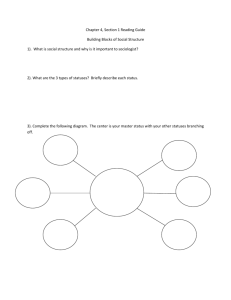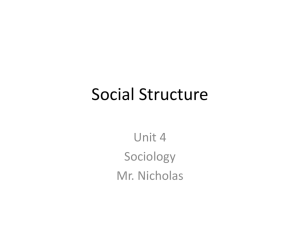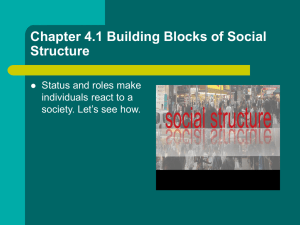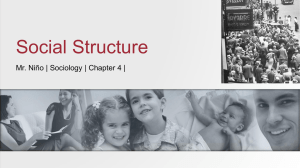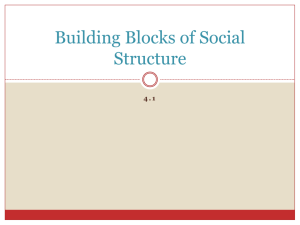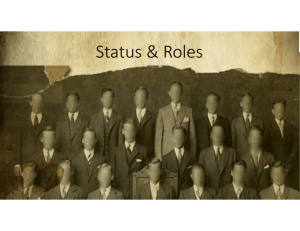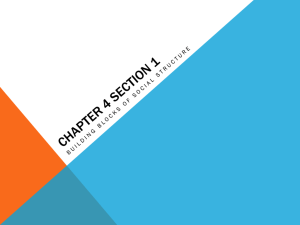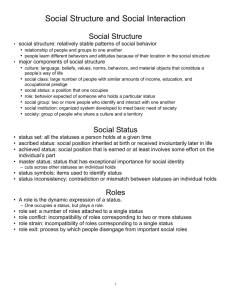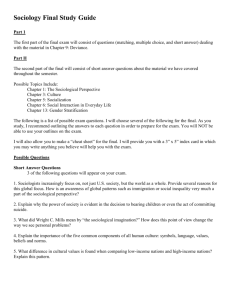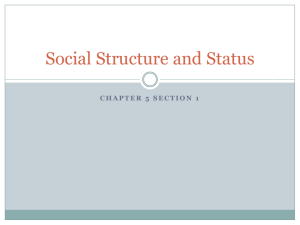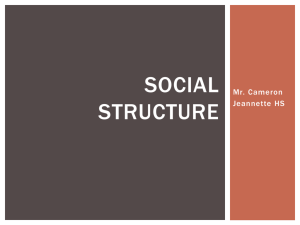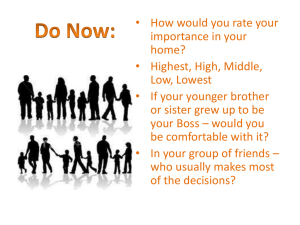Social Structure Building Blocks of Social Structure
advertisement
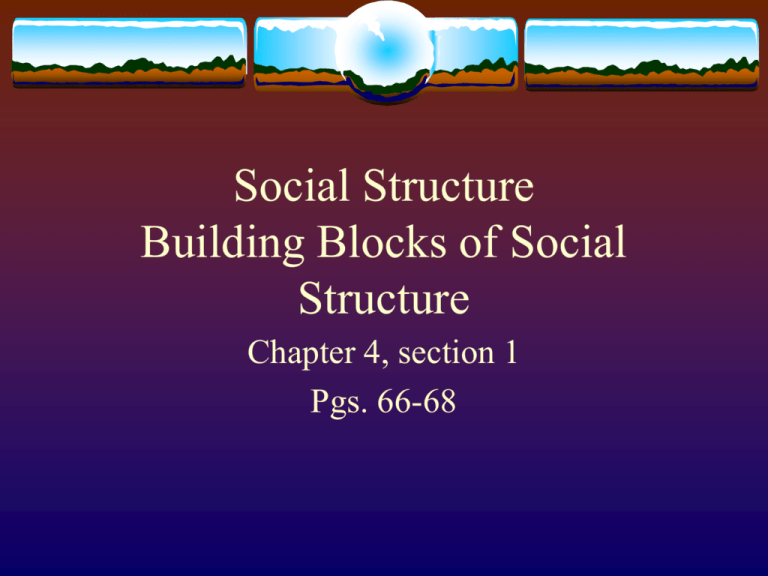
Social Structure Building Blocks of Social Structure Chapter 4, section 1 Pgs. 66-68 Building Blocks Humans are social beings, we live and work in groups and interact in predictable ways. Every society has a structure that guides human interaction. This structure helps people know what is expected of them in most social situations and what they can expect from others. Building Blocks Social structure gives a society its enduring characteristics and makes patterns of human interaction predictable. Social Structure means the network of interrelated statuses and roles that guide human interaction. A Status is a social defined position in a group or in a society. Each status has attached to it one or more roles A role is the behavior-the rights and obligations-expected of someone occupying a particular status. Status Each individual in society occupies several statuses. An individual can be a father, a teacher, a husband, an African American and a church deacon all at the same time. A status set is all of the statuses that a person occupies at any particular time. Statuses are ways of defining where individuals fit in society and how they relate to others in society. Ascribed and Achieved Status Ascribed status: is assigned according to qualities beyond a person’s control. They are based on a person’s inherited traits or are assigned automatically when a person reaches a certain age. You hold the status of teenager or young adult because of your age. Other examples: your age, race, family heritage. Achieved Status: individuals acquire this through their own direct efforts. These efforts include special skills, knowledge or abilities. People have control over their achieved statuses. These can include husband, or wife, parent, high school graduate or athlete. Master Status For most people one status tends to take rank above all others. This status plays the greatest role in shaping a person’s life and determining his or her social identity. This is called a Master Status. These can be either an achieved status or an ascribed status. Example: Occupation Wealth Marital Status Parenthood Role Roles are the components of social structure that bring statuses to life. You occupy a status, but you play a role. At home you play the role associated with the status of son or daughter. At school you play the role of student. Reciprocal roles are corresponding roles that define the patterns of interaction between related statuses. One cannot fulfill the role associated with the status of husband without having someone else perform the role that goes along with the status of wife. Examples doctor-patient, athletecoach, employee-employer. Role Expectation/Role Performance The socially determined behaviors expected of a person performing a role are called role expectations. Parents are expected to provide emotional and physical security for their children Police officers are expected to uphold the law. In reality people’s role performance-their actual role behavior-does not always match the behavior expected by society. Some parents mistreat the children. Even when someone tries to fulfill a role in the manner expected by society, actual performances may fall short of expectations. Role Performance Role performance is much like a play, but there are many differences: Most real life role performance occurs with planning. Real life performance is ad-libbed. We choose our own cues and responses. Role conflict Problems can arise in part because each of us is asked to perform many roles, some of which are contradictory. Sociologists call the different roles are attached to a single status as a role set. Role conflict: occurs when fulfilling the role expectation of one status makes it difficult to fulfill the role expectations of another status. To be a good employee an individual needs to go to work, but to be a good parent, that individual needs to stay home to take care of a sick child. Role Strain Role strain on the other hand, occurs when a person has difficulty meeting the role expectations of a single status. The boss who must maintain the morale of workers while getting them to work long periods of overtime is likely to experience role strain. To deal with conflict and strain we set priorities and segregate roles. Social Institutions When these statuses and roles are organized to satisfy one or more of the basic needs of society, the group is called social institution. The basic needs of society include providing physical and emotional support for its members, transmitting knowledge, producing goods and services, and maintaining social control. Some scholars have focused on the major institutions of family, the economy, politics, education, and religion, media, medicine and science.
